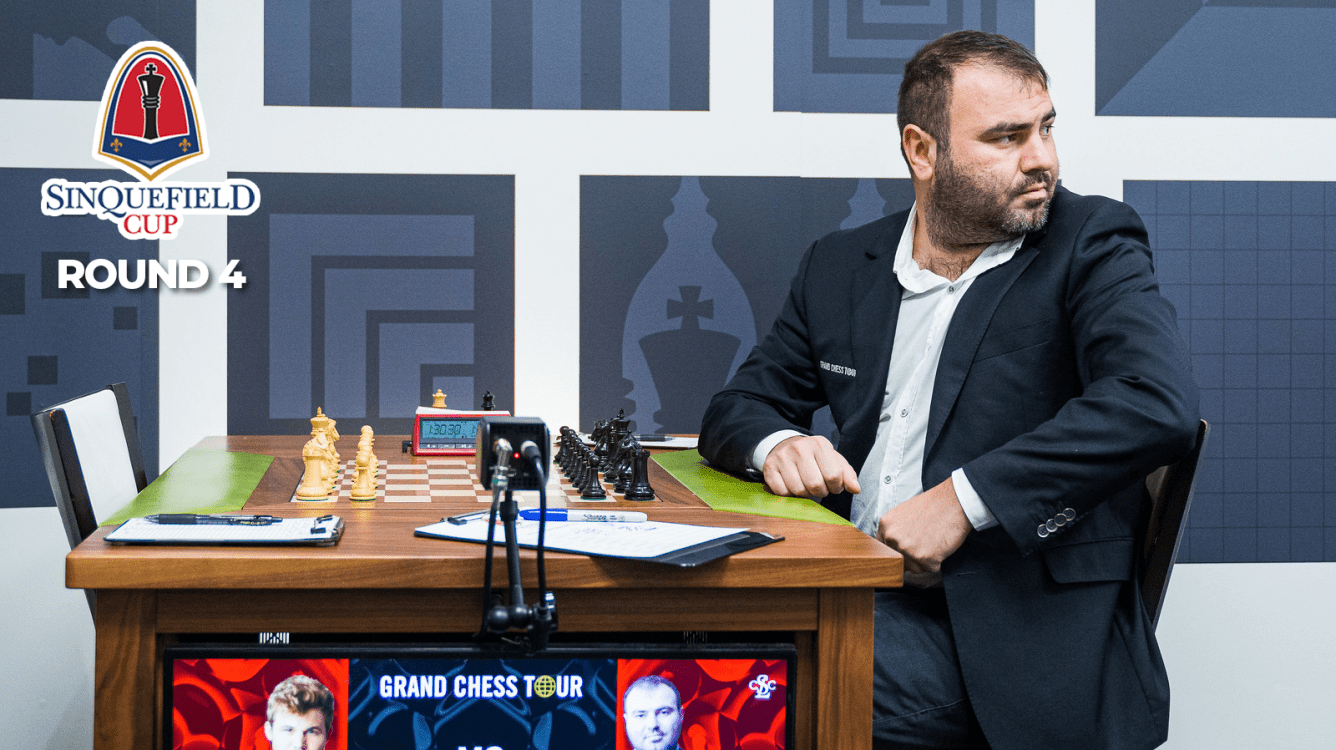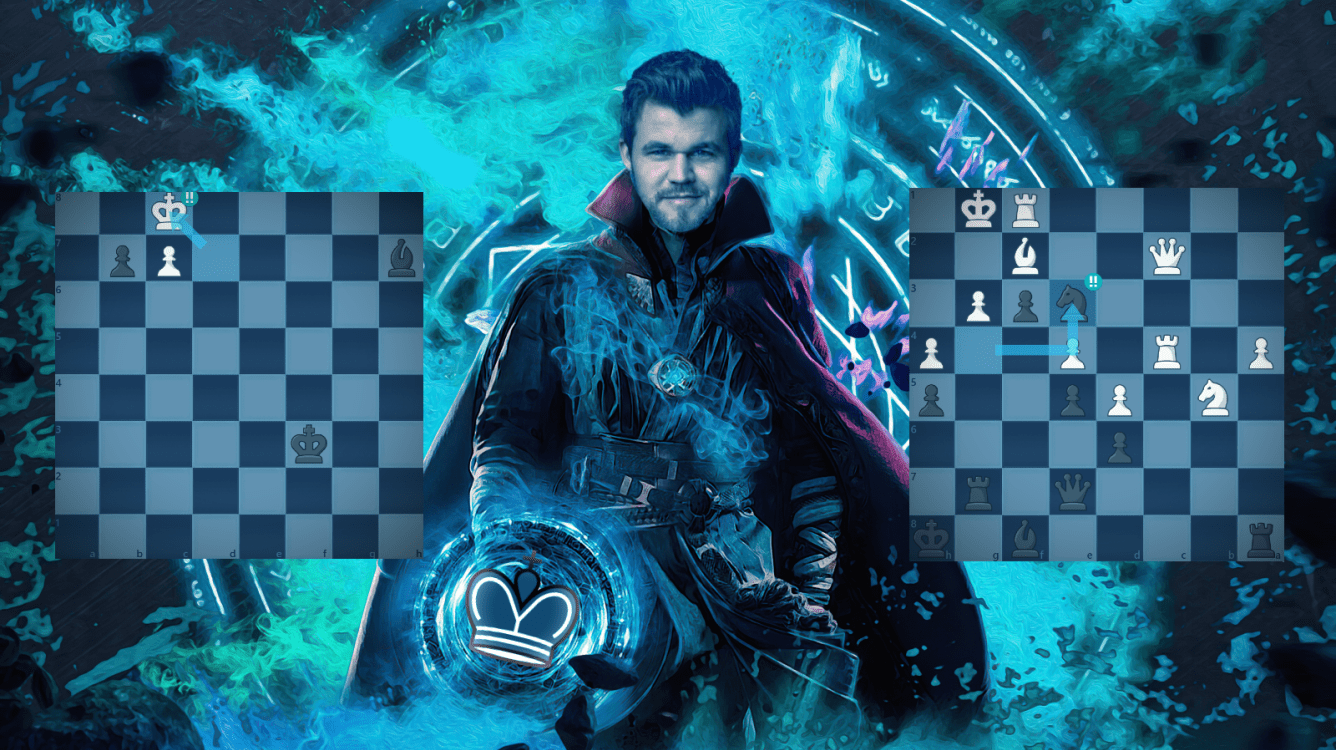
The 15 Steps to Advanced Chess
The definition of an advanced player is very controversial among chess players, though most people agree that it begins is around the 1600 - 2000 rating range. I personally believe that it's 1700 or 1800, but there are more factors than rating, as rating is only a hazy reflection of your chess wisdom. So, here's a list of 15 practices/concepts that advanced players should know.
1. Reviewing Every Game
If you're a serious chess player, you should definitely be reviewing each game you play. It's always important to learn from what you did wrong or what you could be doing better. You can find your weaknesses and your strengths. Many people consider playing and reviewing games to be the best way to improve, and it's easy to see why. Plus, you get to admire your brilliant moves!
2. Playing OTB
OTB (over-the-board) chess is a drastically different experience from online. The atmosphere, the noisiness, the snacks, everything makes it unique. If you're getting serious, there's no better place to start than OTB. As easy as online chess is, you can't become a professional without stepping out into the real world. Also, make sure to annotate, as you usually play better at chess tournaments and cleaning out your mistakes at your top level makes a very substantial difference.

The tense atmosphere of a Tata Steel Chess Tournament. Photo: Alina l'Ami/Tata Steel Chess.
3. Reading Chess Books
Chess books are some of the best sources of chess knowledge. They cover everything, from openings to endgames. Grab a chess book or two to improve your game. Sure, books cost money, but you can probably at least get one.

The Woodpecker Method "carves" your brain as you solve thousands of puzzles.
4. Doing Tactics Regularly
Tactics are, in my opinion, the best way to improve. It's always good to a few puzzles here and there to keep your chess brain sharp. Chess.com has puzzles, but if you don't have a diamond membership you might want to move to a different website.

©DonRajesh, but credit to Chess.com for the background.
5. Knowing your Opening Theory
The opening can determine the course of the game. While it's not the most important phase, get your openings straight if you want to become an expert. Either learn an opening system or memorize your lines, because small opening mistakes can be punished by higher rated players.

London System Haters... Photo: @PedroPinhata
6. Checkmate Patterns
Now we're going to get into concepts that advanced players should know. To start, you should know nearly all tactical patterns at advanced level. Being aware of these allow for more complex combinations. Here is a list of basic tactical ideas from Chess.com's article:
| Attacking f7/f2 | Fork/Double Attack | Sacrifice |
| Attacking the Castled King | Hanging Piece | Simplification |
| Back Rank | Interference | Skewer |
| Basic Checkmates | Mate in One | Smothered Mate |
| Clearance Sacrifice | Mate in Two | Stalemate |
| Decoy/Deflection | Mate in Three+ | Support Mate |
| Defense | Mating Net | Trapped Piece |
| Desperado | Overloading | Underpromotion |
| Discovered Attack/Check | Pawn Promotion | Vulnerable King |
| Double Check | Perpetual Check | Windmill |
| En Passant | Pin | X-Ray Attack |
| Endgame Tactic | Queen Sacrifice | Zugzwang/Zwischenzug |
| Exchange Sacrifice | Removal of the Defender |
7. Knowledge of Statics vs. Dynamics
This one is not too well known by intermediate players, but usually they don't have a problem with it. Nevertheless, most serious players should have a grasp of statics vs. dynamics. If you don't know, statics are long-term (positional) advantages while dynamics are short-term (tactics). These two factors decide the winner of master games. I went more in-depth about this in a blog before so here's an example from it: black has dynamic advantages (an attack on the king) while white has static advantages (queenside superiority + space).
8. Only Doing Beneficial Exchanges
I don't know about you, but I love simplifying things. However, trading is not something you should just do without any real reason. Thus, only exchange pieces if it benefits you in some way. Every move is precious, so you shouldn't waste a single one. Here's an example of an acceptable trade:
Here's a bad trade (extreme example):
9. Piece Positioning
This one should be pretty straightforward. In your games, find the perfect square for your piece and get it there. Knights belong on outposts, bishops should look over long diagonals, and rooks should control files in the middlegame and the 7th/2nd rank in the endgame.
10. Knowing How to Gain/Fight Space
Space, while not too important for beginners, can be fatal in expert play. If you know how to manage and win space, you can use it to squeeze your opponent until they are forced to give up a piece. When you have space, make sure to:
- Avoid trades
- Prevent Pawn Breaks
When you don't have space, do the opposite. As an example, let's take the example from above:
11. Mastering Opposition/Triangulation
Endgames end the game. In many endgames, both sides have equal material, and to win you must out-maneuver your opponent. To master king and pawn endgames, you must master opposition and triangulation. These are essential for endgames such as the following:
12. Memorizing Theoretical Endgames
There are many endgames that can be solved with pure skill, but some endgames are a dead draw unless you know the specific way to make a win. All experts should know common theoretical endgames. Rook endgames have the most theoretical scenarios, including the well-known Lucena position:
13. Sacrifice
Sacrifices are the most admirable parts of chess games. Playing it safe is fine, but you'll miss many opportunities for victory. So, part of being a chess master is knowing what sacrifices are sound. As they say, no risk, no reward.
14. Prophylaxis
Chess is not a one-player game. Therefore, you cannot just concentrate on your ideas, you need to block your opponent's ideas as well. Obviously, if there's threatening a piece, move it, but prophylaxis involves realizing your opponent's less obvious plans. During long online games, you can click "x" to flip the board and see what your opponent is seeing, so you can find out what they're thinking. Or stand up and walk around the board in OTB to get their perspective.

But your opponent might be a bit confused why you're there. Photo: Lennart Ootes / Grand Chess Tour.
15. Grabbing the Initiative
This is one that I haven't been too familiar with, but whoever has the initiative in chess is basically calling the shots. Maintaining the initiative is important to control the game. Making threats and advancements improves your position while ruining theirs, but make sure to keep the initiative in your control. Below, Fischer keeps the initiative with many positional ideas against Spassky.
That ends the blog! I'm no expert, but these are all things we should keep in mind on our way to mastering the art of chess. Thanks for reading.

